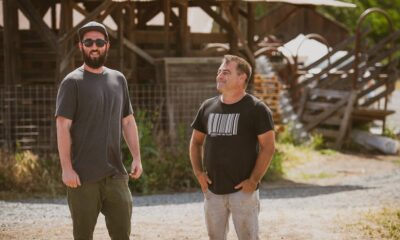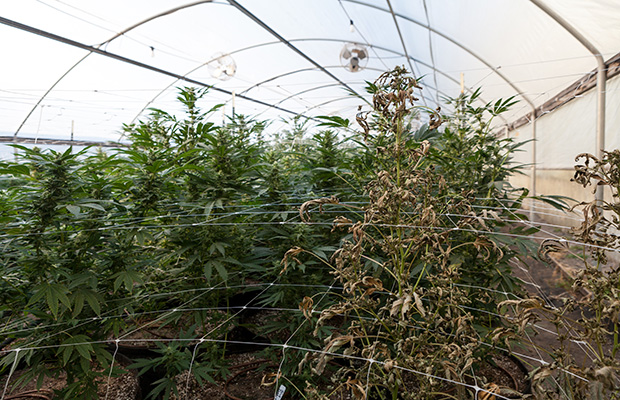
Cannabis
Cannabis Behind The Fire Line
An oil extraction facility is housing the Red Cross volunteers working to help those affected by the Northern California fires.
Everyone is totally silent as we pass through the police barrier on the edge of the Coffey Park neighborhood in the days following a massive fire that consumed the Santa Rosa, California suburb in a matter of hours. Up until this moment, there has been plenty of smoke in the air, but I haven’t seen any destruction. This changes when we take a turn from a normal-looking residential block into what CannaCraft Co-CEO Ned Fussell calls “zombie land.”
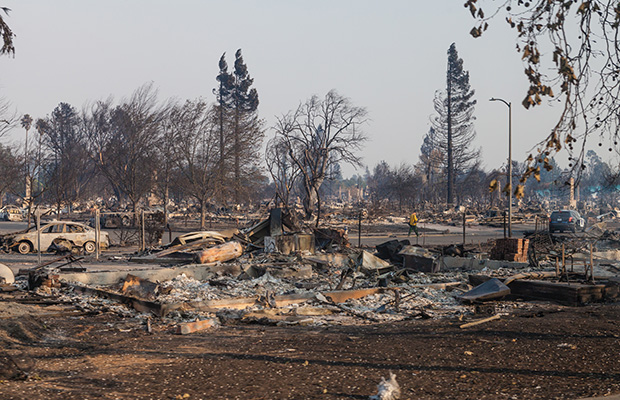
The destruction in Coffey Park.
Then, what starts with a blackened wooden fence in front of an otherwise still-standing home, expands into an empty, ashen hellscape for as far as the eye can see. The homes are all completely gone, but there are traces of what was there only a few days prior: patio furniture, a blackened and yellowed washer and dryer set smoldering among a pile of embers, hollowed out cars with their tires melted into the residential street. The large metal objects that remain form a picture of what once was and I become acutely aware that the rows and rows of still-standing chimneys are stone markers, we are driving within what has become a graveyard. The scope of the loss is so crushing and unbelievable that it becomes easier to cope by describing the scene as “surreal,” but the fires across the Golden State are still burning, the ashes here are still smoldering, many people lost their lives and their homes and there is nothing that can be more real than what we are seeing — all that’s left after a deadly firestorm swept through the streets in the early hours of the morning on Oct 9.
Upon arriving at the CannaCraft farm, collapsed structures are everywhere. Fussell first points out the remains of what was once the resident’s home. Six of his employees were sleeping there when the fire broke out in the middle of the night and were awakened to a roof that was consumed by flames. There was very little time to react and all the people ran on foot for the fence line as propane tanks exploded and their vehicles were engulfed in the inferno.
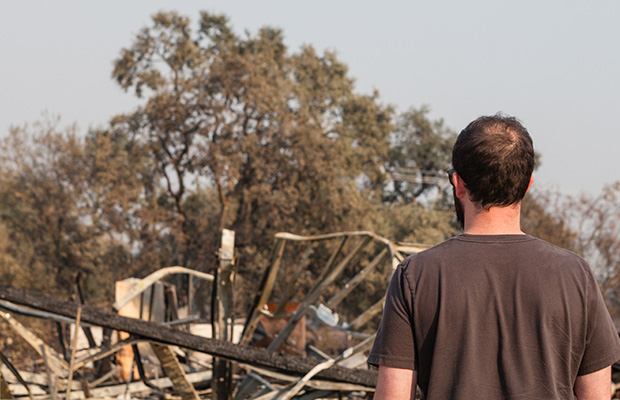
CannaCraft Co-CEO Ned Fussell looks at the resident’s home where six of his employees were sleeping when the fire broke out.
“It took about 10 minutes for this thing to go up,” Fussell says, pointing to the spot where the structure once stood.
The space that Cannacraft used for drying the cannabis they produce is now nothing more than a pile of mangled steel beams.
“We had just filled this whole thing up with two outdoor crops,” Fussell says.
As our group continues to walk through the rubble, someone picks up a toasted flask from within a shipping container that has otherwise become liquidated steel. I turn to my left to see a group of turkeys wandering among the twisted and torched metal on what was once a working cannabis farm.

All that remains of a shipping container on the CannaCraft farm.
“About half of the turkeys survived,” says Fussell. “We have about three chickens left, most of them didn’t make it out.”
The only structures spared were the greenhouses. To see the scene firsthand is unbelievable, the path of the fire stops just feet before the greenhouse doors. We step inside one of the 20 greenhouses, which hold about an acre’s worth of marijuana plants in flower, and the air quality immediately changes. The fragrances bursting off the ripe buds and the ocean of green leafy plants are a comforting break in the face of such utter devastation.
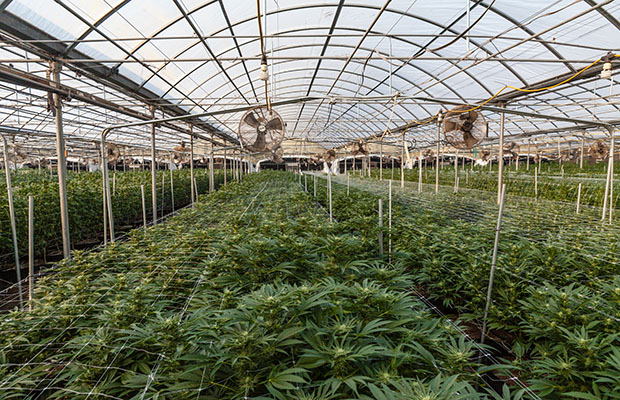
Twenty greenhouses on site were spared from the fire.
“They made it,” Fussell says of the plants. “A little bit of ash, but they will be alright.”
But why did the fire stop where it did — only feet from the grow?
“An energy wall,” he says. “They didn’t want to go down like that.”
We walk into one of the greenhouses most near to the path of the fire and the netting from inside the door is singed away. A single plant on the far right corner of the front row stands as a yellowed skeleton of its former self.
“We had to sacrifice one for the rest to survive,” Fussell says.
The one burned plant is a Blue Cookies. I pinch a bud within my fingertips and am surprised than it still retains some of its sticky resin. It was never cured, so it still smells vegetal. The combination of Blue Cookies torched by flames takes on a sweet light fragrance comparable to loose green tea leaves.
The Cannabis Community in the Path of Disaster
Images from a NASA satellite show a trail of smoke over 500 miles long. The fires have hit the epicenter for California cannabis, Sonoma and Mendocino counties, at the most inopportune time. Most farmers in this region were ready to harvest their crops; now they are struggling to save their homes, crops and grows. Even for those grows that did survive, like the one at the CannaCraft farm, access remains limited. The buds are ready and need to be harvested, the plants need to be watered.
The CannaCraft headquarters is located in an industrial park a few miles away. The business is focused on CO2 extraction under the Absolute Extracts, Care By Design and Satori brands — processing 270 lbs of trim per day in 18 extractors, yielding about 27 lbs of crude oil per day. Their grows are located all throughout the state, so not all of their supply is affected by the disaster.

The CO2 extraction machines within the CannaCraft facility.
At this stage in their development, CannaCraft is accustomed to responding to crisis situations. Last June, 100 officers raided the building and took almost everything, but they were able to rebuild.
“They’ve never given anything back,” Fussell said of the raid. “They came in on payroll day, took everyone’s payroll —$600,000 something dollars. They took all our machines, all our oil, everything. And the one thing that they left behind, which ended up saving us was our most valuable thing here, which is our packaging, just the paper and empty cartages and that enabled us, within a week that we were raided, we got oil fronted to us or from other people and that enabled us to fill orders.”
Even though at least a third of the employees who have been affected by the fires are out of the office, the business is still running and people are extracting cannabis oil and taking orders in an space filled with cots, blankets and emergency supplies.

Pillows, blankets and emergency supplies are housed within the CannaCraft office.
“We completely rely on revenue from just month to month to pay bills,” Fussell says. “We don’t have the buffer like that… Right now it’s just a disaster zone, most business are shut down but we kind of have to keep it rolling just because [stopping production] jams things up pretty hard. People are still focused. Everyone is just kicking back into gear. It’s hard, it’s a really tough time for everyone, but people that feel that they can still be of help have been showing up to keep working.”
Fussell said there has also been a strong reaction to the disaster from others in the cannabis community, who have reached out to offer their assistance.
“People are reaching out to offer us support, we’re reaching out to the smaller farmers to show them support,” he says. “Everyone is just chipping in to do what they can to help. In this industry, everybody has been on their own for so long that I think it’s pretty engrained in the culture to help one another out, especially when times get really tough like this.”
The Red Cross Meets the Green Cross
The CannaCraft headquarters is a massive 30,000-square-foot facility that includes a full manufacturing site, lab testing, office, distribution site and warehouse. CannaCraft’s Vice President of Marketing Kial Long greets us to offer a tour of the building, as well as the office space that has now become the headquarters for the Red Cross.
“We reached out to the Red Cross and we said, ‘We have space, what do you need it for?’” Long says.
While CannaCraft initially thought it might become a shelter for those who have been evacuated, the additional 12,000-square-feet of office space that CannaCraft was planning to expand into had cubicles and was able to be quickly activated with phone lines and internet service.
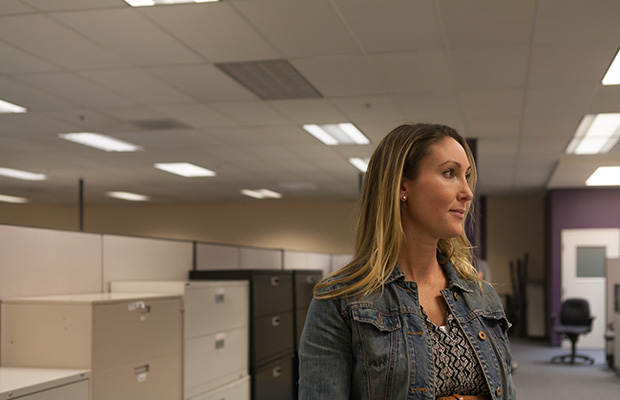
CannaCraft’s Vice President of Marketing Kial Long stands within the office area that has become the Red Cross headquarters.
“They were here within hours,” Long says of the Red Cross volunteers.
Upon our arrival the office space is buzzing with activity as volunteers track the number of people who are staying within shelters and work to coordinate emergency supplies.

The Red Cross headquarters is located within the larger CannaCraft facility, which continues to operate with a reduced staff.
“Normally they’d have to go into a gym-style thing and they’d have to set up tables and cables and everything and it was just already set up so it really just kind of worked out really well for them,” CannaCraft Co-CEO Dennis Hunter says of the Red Cross headquarters.
Cannabis Coverage in a Disaster Zone
“Cannabis Now? Dude, the snack room is over there,” Red Cross Public Affairs Liaison Larry Dietz says, when I approach him to get a sense of the scope of the work taking place.
After telling me he’s more of a “cigar guy,” Dietz explains that the disaster is so large that the office is actually housing two Red Cross headquarters for Sonoma and Napa counties.
“The disaster is considered to be so big that it needs to have a very robust staff,” Dietz says, explaining that there are 450 Red Cross volunteers in and around the area in order to offer assistance.
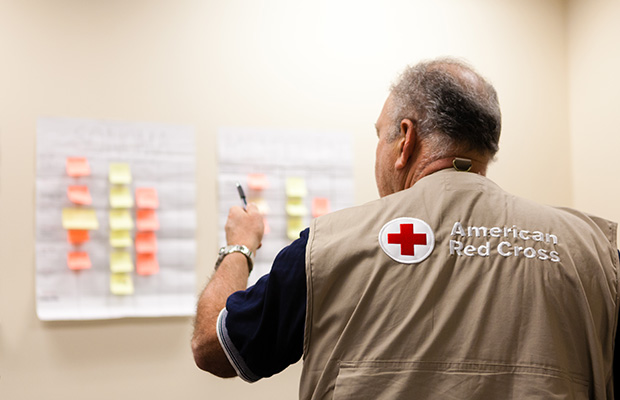
Red Cross Public Affairs Liaison Larry Dietz shows the charts indicating how many people are in various shelters.
The Red Cross is like a contractor in a way, and pairs with partners to provide help. When I spoke with Dietz on Friday, 20,000 acres had already burned, 2,000 homes were destroyed and 29 fatalities had been reported. Dietz has volunteered with the Red Cross for over a decade and helped with floods in San Jose in February.
“So I’ve got floods, fires, I’m waiting for grasshoppers,” he jokes.
Medicine and Community
CannaCraft didn’t only donate office space to the Red Cross. It also distributed $50,000 in free medicine for those affected by the fires through partner dispensaries.
“That was just to be distributed to patients in the area that were evacuated, they don’t have any medicine, so they can go to these partner dispensaries and pick up what they need,” Long said. “Immediately when it happened we thought, ‘What can we do? We have a warehouse full of product — Let’s get that out right now.’ And then the next day, ‘What can we do? We have a space, who can use our space?’ Then we thought, ‘What can we do next?’ We’re still figuring out what the next move is. We’ve got a lot of properties, we’ve got equipment.”
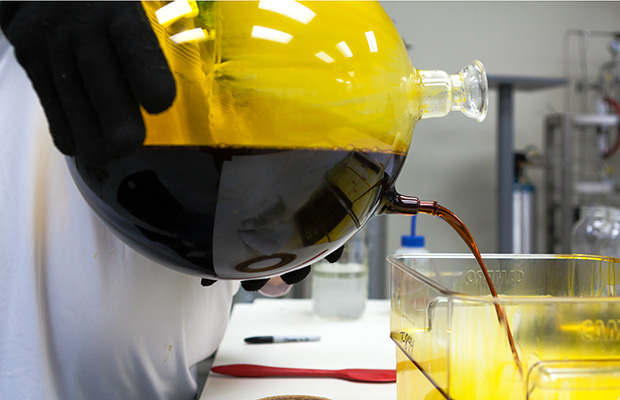
CO2 oil that has yet to go through the final stages of refinement is processed in the CannaCraft lab.
The donation shows that, while CannaCraft will almost also certainly take losses, their focus remains on providing necessary assistance to their community. They want to help both patients and small farmers.
“These are businesses that can’t get business loans to begin with,” Fussell says. “All of their money has been tied up into waiting until harvest to recoup those investments. It will be reaching levels of devastation for smaller companies.”
Despite the fact that Fussell was one of about 20 employees forced to evacuate their homes and sleep in the office on the first nights of the fire, he considers CannaCraft lucky.
“We’re lucky that our site is still here,” he says. “Just the fact that it’s still here and that we’re able to offer this shows just how fortunate we’ve been.”
But the fight is far from over.
“It’s definitely been quite a whirlwind for sure, a roller coaster, we’re not really sure everyday what’s next so it’s been quite a moving target, but we’re getting through it,” he says. “We had some close calls so we’re excited and happy and relieved everyone is safe.”
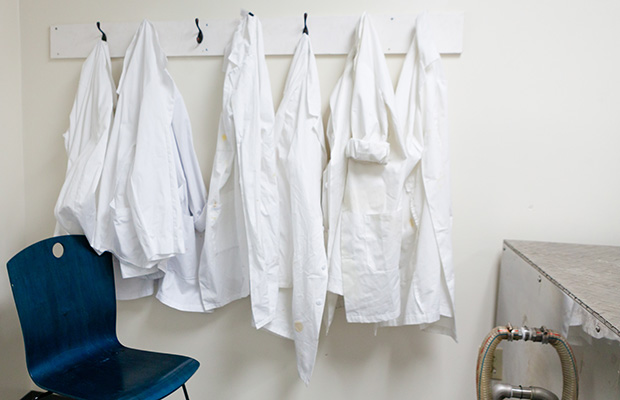
The CannaCraft lab continues to operate despite being located within a disaster zone.
“We’re taking a bunch of losses all around all our farms — from ones that are either burned or lack access now, [officials have] basically locked down a majority of the county that way. It’s crazy just to get plants watered at this point and then there’s no electricity so the pumps don’t work for the water. We’re just getting it on every side.”
Before the fires, this week was scheduled as the week CannaCraft was set to harvest.
“The timing is basically pretty interesting, just with everything how it’s all unfolding, but we’ve been through lots of crisis,” Fussell says. “We’re getting pretty good at crisis management at this point with our experience.”
A Glimmer of Hope
Despite being in the midst of crisis, Fussell has a vision for the future.
“Time will tell how heavy [the fires] impact the space, the industry and the county,” he says. “After the dust settles I’m hoping we can use cannabis as an ignition to light a light up and help, you know, generate some revenue and help build the county back.”
And this vision he sees is beautiful, with cannabis plants replacing grape vines over the rolling hills of California wine country.
“Maybe change some of those wineries over to ganja farms, that’s what we’re hoping for,” he says. “I think coming from this industry, the one thing it does build up is good resilience. We’re used to chaos and things going wrong, whether it’s law enforcement actions or robberies or other issues like that — it’s a pretty wavy space. I think we’re doing alright for the conditions.”
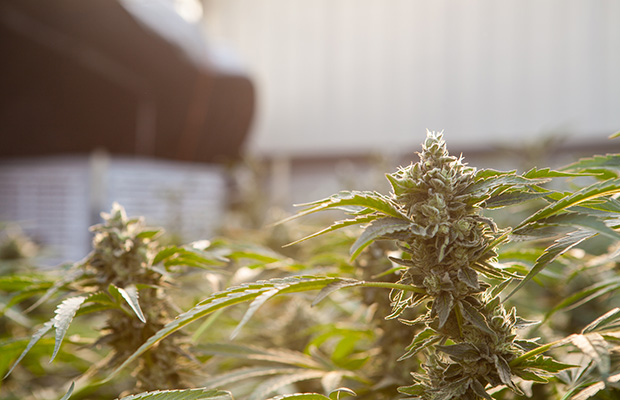
Buds stretch toward the sun in a CannaCraft greenhouse on the edge of Coffey Park.
TELL US, what should be done to help the victims of the Northern California fires?



